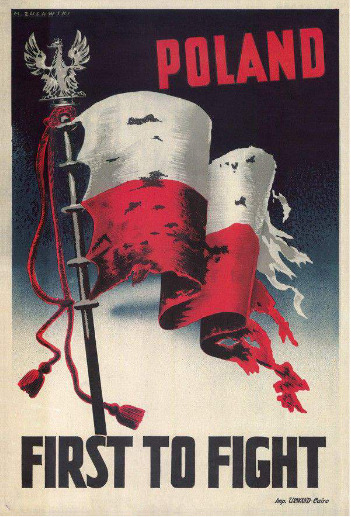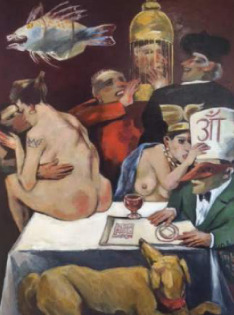"Art Out of the Bloodlands: A Century of Polish Artists in Britain"

020 7604 3991 emailThis email address is being protected from spambots. You need JavaScript enabled to view it.


Jankel Adler , Teodor Axentowicz , Janina Baranowska , Magda Blasinska , Janina Bogucka , Marian Bohusz-Szyszko , Karolina Borchardt , Andrzej Maria Borkowski , Caziel (Kazimierz Józef Zielenkiewicz) , Joanna Ciechanowska , Stanisław Frenkiel , Henry Glicenstein , Henryk Gotlib , Roman Halter , Marthe Hekimi (née Marta Szostakowska) , Josef Herman , Maciej Jędrzejewski , Josef Karpf , Andrzej Klimowski , Włodzimierz Kołtonowski , Halina Korn , Adam Kossowski , Andrzej Kuhn , Małgorzata Łapsa-Malawska , Isaac Lichtenstein , Romek Marber , Alicia Melamed Adams , Maja Ngom , Moshe Oved (Edward Good) , Jan Pieńkowski , Leopold Pilichowski , Lena Pillico , Josef Piwowar , Piotr Potworowski , Hanna Puskarz , Zdzisław Ruszkowski , Ralph Sallon , Magdalena Skupińska , W. R. Szymanski , Adriana Świerszczek , Stefan and Franciszka Themerson , Feliks Topolski , Mark Wayner , Jan Wieliczko , Alfred Wolmark , Tadeusz Znicz-Muszyński MarekŻuławski

Ben Uri Gallery and Museum
108A Boundary Rd, London NW8 0RH, United Kingdom020 7604 3991 email
28 June > 17 September, 2017
 Marek Żuławski, Poland First to Fight, 1939, poster, Private Collection |
 Stanislaw Frenkiel, Woman in a Red Hat, oil on canvas, Private Collection |
 Stanislaw Frenkiel, Incantations, 1993, oil on canvas, Private Collection, courtesy the artist's estate |
Ben Uri opens on 28th June the second exhibition in its series on refugee and migrant artists, highlighting the Polish contribution in British art over the last century. This focus is particularly apt as the community approaches its millionth citizen, the largest migrant group in Britain, and as Poland celebrates a century since it regained its independence as a nation state after 123 years.
The exhibition will tell aspects of the story of the Polish community in Britain, and Poland's recent turbulent history, through the lens of art. It will trace the complex stories of Polish-born artists who fled successive regimes, were variously persecuted, imprisoned and interned, crossed continents – or, today, have made positive choices to come to Britain to study or to develop professionally.
The exhibition brings together a century of artworks and archival material by both celebrated and lesser-known Polish-born artists selected from the Ben Uri Collection and from Polish institutions, galleries and private collections. Paintings, posters, prints, drawings, cartoons, book illustrations, film and sculpture explore issues of identity and migration, whilst intersecting with formal art historical developments, ranging from expressionism to Pop Art.
Featured artists from the Ben Uri Collection include: Jankel Adler, Henry Glicenstein, Isaac Lichtenstein, Leopold Pilichowski and his wife, Lena Pillico, Adriana Świerszczek, Alfred Wolmark; cartoonist and caricaturists: George Him, Ralph Sallon and Mark Wayner, and Holocaust survivors: Roman Halter, Josef Herman, Shmuel Dresner and Alicia Melamed Adams (the last remaining student of Bruno Schulz). Herman is represented by two recent and important acquisitions which pay homage to Goya’s Black Paintings and memorialise the fighters for the Warsaw Ghetto.
Featured artists from other collections include: Janina Baranowska (who studied with David Bomberg at Borough Road), Marian Bohusz Szyszko, founder of the Polish School of Art in London; Henryk Gotlib; Stanisław Frenkiel; Zdzisław Ruszkowski; Feliks Topolski; Second World War pilot and Slade graduate, Jan Wieliczko; and Marek Żuławski; many highlighted in Douglas Hall’s important publication, Art in Exile, Polish Painters in Post-war Britain (2008).
Furthermore, given Poland’s singular contribution to graphic arts in the twentieth century, posters, book covers and illustrations by designers such as Romek Marber, Jan Pieńkowski and W R Szomański, are also displayed.
Magdalena Skupińska, Magda Błasińska and Maja Ngom, from the Royal College of Art, and Hanna Puskarz from the London College of Fashion represent Polish students graduating at the highest level in Britain, whilst video artist, Maciej Jędrzejewski, has recently opened his first solo show in Brick Lane, London, E1.
All but a handful of the featured works have been created in England – the new homeland - yet many retain symbols of Polish national identity, from Catholicism and the cavalry, to the dark forests and traditional embroidery. Other images reflect prevailing art historical styles of the host nation – Znicz-Muszyński’s distinctive palette and spiky composition recalls mid-century works by Graham Sutherland, whilst Żuławski’s vivid female nudes, and his later use of unmodulated colour, calls to mind Pop Art and the work of artists such as Alan Jones.
Taken as a whole, this two part exhibition documents and acknowledges the significant, distinctive and enduring contribution made to Britain’s visual culture by the artists of its largest migrant community.
Curated by Rachel Dickson, Head of Curatorial Services, Ben Uri, the exhibition will be accompanied by a full programme of related talks and events.
The exhibition has been supported by the Embassy of Poland, Polish Social and Cultural Association (POSK) and the Polish Cultural Institute.
The exhibition will tell aspects of the story of the Polish community in Britain, and Poland's recent turbulent history, through the lens of art. It will trace the complex stories of Polish-born artists who fled successive regimes, were variously persecuted, imprisoned and interned, crossed continents – or, today, have made positive choices to come to Britain to study or to develop professionally.
The exhibition brings together a century of artworks and archival material by both celebrated and lesser-known Polish-born artists selected from the Ben Uri Collection and from Polish institutions, galleries and private collections. Paintings, posters, prints, drawings, cartoons, book illustrations, film and sculpture explore issues of identity and migration, whilst intersecting with formal art historical developments, ranging from expressionism to Pop Art.
Featured artists from the Ben Uri Collection include: Jankel Adler, Henry Glicenstein, Isaac Lichtenstein, Leopold Pilichowski and his wife, Lena Pillico, Adriana Świerszczek, Alfred Wolmark; cartoonist and caricaturists: George Him, Ralph Sallon and Mark Wayner, and Holocaust survivors: Roman Halter, Josef Herman, Shmuel Dresner and Alicia Melamed Adams (the last remaining student of Bruno Schulz). Herman is represented by two recent and important acquisitions which pay homage to Goya’s Black Paintings and memorialise the fighters for the Warsaw Ghetto.
Featured artists from other collections include: Janina Baranowska (who studied with David Bomberg at Borough Road), Marian Bohusz Szyszko, founder of the Polish School of Art in London; Henryk Gotlib; Stanisław Frenkiel; Zdzisław Ruszkowski; Feliks Topolski; Second World War pilot and Slade graduate, Jan Wieliczko; and Marek Żuławski; many highlighted in Douglas Hall’s important publication, Art in Exile, Polish Painters in Post-war Britain (2008).
Furthermore, given Poland’s singular contribution to graphic arts in the twentieth century, posters, book covers and illustrations by designers such as Romek Marber, Jan Pieńkowski and W R Szomański, are also displayed.
Magdalena Skupińska, Magda Błasińska and Maja Ngom, from the Royal College of Art, and Hanna Puskarz from the London College of Fashion represent Polish students graduating at the highest level in Britain, whilst video artist, Maciej Jędrzejewski, has recently opened his first solo show in Brick Lane, London, E1.
All but a handful of the featured works have been created in England – the new homeland - yet many retain symbols of Polish national identity, from Catholicism and the cavalry, to the dark forests and traditional embroidery. Other images reflect prevailing art historical styles of the host nation – Znicz-Muszyński’s distinctive palette and spiky composition recalls mid-century works by Graham Sutherland, whilst Żuławski’s vivid female nudes, and his later use of unmodulated colour, calls to mind Pop Art and the work of artists such as Alan Jones.
Taken as a whole, this two part exhibition documents and acknowledges the significant, distinctive and enduring contribution made to Britain’s visual culture by the artists of its largest migrant community.
Curated by Rachel Dickson, Head of Curatorial Services, Ben Uri, the exhibition will be accompanied by a full programme of related talks and events.
The exhibition has been supported by the Embassy of Poland, Polish Social and Cultural Association (POSK) and the Polish Cultural Institute.


OPEN :
28 June 10:00 am
28 June 10:00 am









